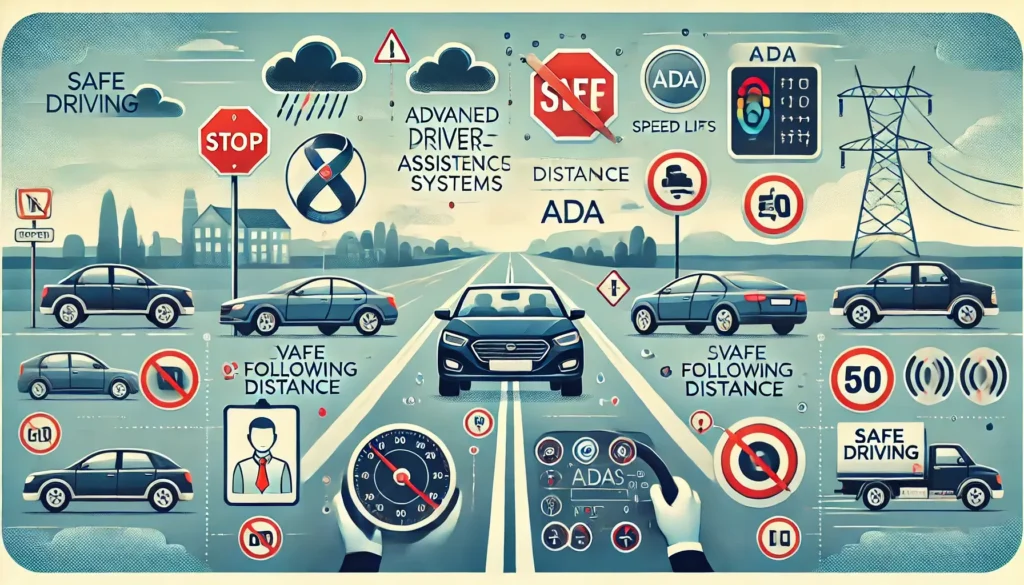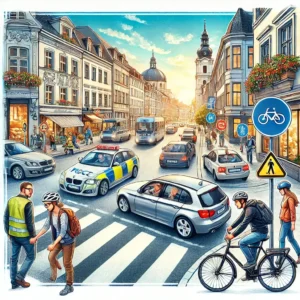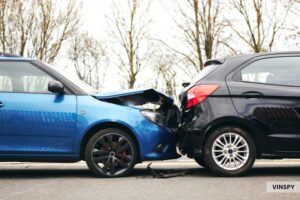A Comprehensive Analysis
Road safety is a major concern across Europe, with thousands of car accidents occurring every year. Understanding car accident statistics by country can provide valuable insights into the effectiveness of road safety measures and highlight areas needing improvement. This blog post delves into the latest car accident statistics in Europe, comparing different countries and examining trends in road safety.
Overview of Car Accident Statistics in Europe
Europe has some of the safest roads in the world, but disparities exist between countries. According to the European Commission, the average number of road deaths per million inhabitants in the EU was 42 in 2023. However, this figure varies significantly from country to country.
Top Countries with the Lowest Accident Rates
Several countries in Europe have achieved remarkable success in minimizing car accidents through stringent regulations, public awareness campaigns, and advanced road infrastructure. Here are some of the countries with the lowest car accident rates:
- Sweden
Sweden consistently ranks among the top countries with the safest roads. In 2023, Sweden recorded only 18 road deaths per million inhabitants, thanks to its Vision Zero policy, which aims to eliminate all traffic fatalities and severe injuries. Sweden’s commitment to safety includes well-maintained roads, effective public transportation, and a strong emphasis on driver education.
Learn more about Sweden’s Vision Zero policy here.
- Norway
Norway is another leader in road safety, with 20 road deaths per million inhabitants in 2023. The country has invested heavily in infrastructure improvements and strict enforcement of traffic laws. Norway’s use of technology, such as automatic speed cameras and intelligent transportation systems, has contributed to its low accident rates.
Read about Norway’s road safety initiatives here.
- Switzerland
With a rate of 22 road deaths per million inhabitants in 2023, Switzerland’s comprehensive approach to road safety includes rigorous driver testing, well-marked roads, and proactive measures to reduce drunk driving.
Explore Switzerland’s road safety strategies here.
Countries with Higher Accident Rates
While Europe boasts some of the safest roads globally, several countries face challenges in reducing car accidents. Here are countries with higher accident rates:
- Romania
Romania has one of the highest road death rates in Europe, with 96 deaths per million inhabitants in 2023. Factors contributing to this include inadequate road infrastructure, limited enforcement of traffic laws, and a high prevalence of speeding and drink-driving.
Learn about Romania’s road safety challenges here.
- Bulgaria
Bulgaria recorded 85 road deaths per million inhabitants in 2023. The country struggles with poor road conditions, high-speed driving, and insufficient public awareness about road safety.
Find more information on Bulgaria’s road safety issues here.
- Croatia
With 78 road deaths per million inhabitants in 2023, Croatia’s high accident rates are linked to narrow rural roads, inadequate signage, and frequent violations of traffic rules.
Discover more about Croatia’s efforts to improve road safety here.
Trends and Improvements in Road Safety
Despite the challenges, Europe has made significant progress in improving road safety. The EU’s Road Safety Action Plan aims to halve the number of road deaths by 2030, with measures including:
- Stricter Regulations: Enhanced enforcement of traffic laws, including speed limits and drink-driving policies.
- Infrastructure Improvements: Investment in safer roads, improved signage, and better lighting.
- Technology Integration: Adoption of advanced driver-assistance systems (ADAS) in vehicles and the use of AI for traffic management.
- Public Awareness Campaigns: Initiatives to educate drivers on safe driving practices and the importance of wearing seat belts.
Comparative Analysis of Car Accident Statistics
A comparative analysis of car accident statistics across Europe reveals interesting trends and insights:
| Country | Road Deaths per Million (2023) | Notable Factors |
|---|---|---|
| Sweden | 18 | Vision Zero policy, strict regulations |
| Norway | 20 | Advanced technology, infrastructure investment |
| Switzerland | 22 | Comprehensive road safety measures |
| Romania | 96 | Poor infrastructure, enforcement issues |
| Bulgaria | 85 | High-speed driving, public awareness challenges |
| Croatia | 78 | Narrow roads, traffic violations |
Explore the complete statistics here.
Impact of COVID-19 on Road Safety
The COVID-19 pandemic had a significant impact on road safety across Europe. With lockdowns and travel restrictions, many countries saw a temporary decrease in road traffic and accidents. However, as normalcy returns, traffic volumes have rebounded, posing new challenges for road safety.
Read about the impact of COVID-19 on road safety here.
How to Prevent Being in a Car Accident: Practical Tips for Safer Driving
Car accidents are a serious concern across Europe, affecting thousands of lives every year. While external factors like road conditions and weather play a role, most accidents result from human error. By adopting safe driving practices and leveraging modern technology, you can significantly reduce your risk of being involved in a car accident. Here are some practical tips to help you stay safe on the road:
1. Stay Focused and Avoid Distractions
Distractions are one of the leading causes of car accidents. Whether it’s texting, adjusting the GPS, or even eating while driving, taking your attention off the road can be dangerous. Here’s how to minimize distractions:
-
Put Your Phone Away: Use hands-free options if you need to make calls or send texts. Better yet, pull over safely if you must use your phone.
-
Set Your GPS Before Driving: Configure your GPS route before you start driving and use voice navigation to avoid looking at the screen.
-
Stay Focused on the Road: Keep both hands on the wheel and your eyes on the road, especially in heavy traffic or adverse weather conditions.
-
Limit Other Distractions: Avoid eating, applying makeup, or engaging in any activity that takes your focus away from driving.
2. Follow Traffic Rules and Speed Limits
Adhering to traffic rules and speed limits is crucial for preventing accidents. Here’s what you can do:
-
Obey Speed Limits: Speeding reduces your reaction time and increases the severity of accidents. Always stick to posted speed limits, especially in residential areas and school zones.
-
Use Turn Signals: Always use turn signals when changing lanes or turning to communicate your intentions to other drivers.
-
Yield the Right of Way: Be courteous and follow right-of-way rules to avoid confusion and collisions at intersections.
-
Respect Traffic Signs and Signals: Stop at red lights and stop signs, and yield when necessary.
3. Maintain a Safe Following Distance
Tailgating is a common cause of rear-end collisions. Maintaining a safe following distance gives you more time to react to sudden stops or emergencies:
-
Use the 3-Second Rule: Keep at least a three-second distance between your car and the vehicle in front of you. Increase this distance in poor weather conditions or heavy traffic.
-
Be Cautious in Poor Conditions: Double the following distance in rain, snow, or fog, as these conditions reduce visibility and traction.
4. Drive Defensively
Defensive driving is a proactive approach that anticipates potential hazards and reacts accordingly:
-
Stay Aware of Surroundings: Continuously scan the road for potential hazards, such as pedestrians, cyclists, and other vehicles.
-
Expect the Unexpected: Assume that other drivers might make mistakes and be prepared to react safely.
-
Avoid Aggressive Driving: Keep calm and avoid road rage. Allow aggressive drivers to pass and maintain a safe distance.
-
Be Extra Cautious at Intersections: Always look both ways before crossing intersections, even if you have the right of way.
5. Utilize Vehicle Safety Features
Modern vehicles come equipped with various safety features designed to prevent accidents. Make the most of these technologies:
-
Use Advanced Driver-Assistance Systems (ADAS): Features like lane-keeping assist, adaptive cruise control, and automatic emergency braking can significantly enhance safety.
-
Regularly Check Safety Equipment: Ensure that your airbags, seat belts, and anti-lock braking systems are functioning properly.
-
Keep Your Vehicle Maintained: Regular maintenance checks can prevent mechanical failures that might lead to accidents. Pay attention to brakes, tires, lights, and fluid levels.
6. Adjust Driving to Weather Conditions
Weather conditions can greatly affect driving safety. Here’s how to adapt to different conditions:
-
Slow Down in Rain or Snow: Reduce your speed to prevent skidding and hydroplaning.
-
Use Fog Lights: In foggy conditions, use fog lights to improve visibility and help other drivers see you.
-
Avoid Sudden Movements: Be gentle with steering, braking, and accelerating in slippery conditions to maintain control of your vehicle.
-
Plan Your Trip: If severe weather is forecasted, consider delaying your trip or finding alternative routes.
7. Never Drive Under the Influence
Driving under the influence of alcohol or drugs is illegal and extremely dangerous. Here are some guidelines to follow:
-
Designate a Sober Driver: If you plan to drink, arrange for a designated driver or use a rideshare service.
-
Understand Medication Side Effects: Be aware of the side effects of prescription and over-the-counter medications, especially if they cause drowsiness.
-
Stay Alert: If you’re feeling fatigued, pull over and rest.
8. Understand the Importance of Road Etiquette
Respect and understanding among drivers contribute to road safety:
-
Be Patient: Avoid rushing and remain calm, even in traffic jams or long queues.
-
Use Courtesy: Allow others to merge, and give way to emergency vehicles and pedestrians.
-
Acknowledge Other Drivers: Use hand signals or nods to communicate intentions or thank other drivers.
9. Participate in Safe Driving Programs
Joining a safe driving course can enhance your skills and knowledge:
-
Enroll in Defensive Driving Courses: These programs teach advanced driving techniques and defensive strategies.
-
Participate in Refresher Courses: Keep your driving skills up-to-date, especially as laws and technologies evolve.
10. Stay Informed About Local Road Safety Laws
Being aware of local road regulations ensures compliance and safety:
-
Know the Laws: Each country or region may have specific driving laws. Familiarize yourself with them before traveling.
-
Understand Penalties: Be aware of the consequences of traffic violations to encourage adherence to the rules.
Conclusion
Preventing car accidents requires a combination of safe driving practices, awareness, and technology. By staying focused, following traffic rules, and leveraging modern vehicle safety features, drivers can significantly reduce their risk of accidents. Understanding and applying these tips can lead to safer roads for everyone.




